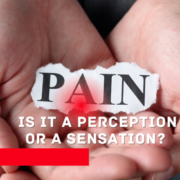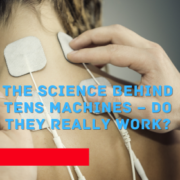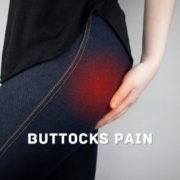Changing How People Think About Back Pain
Pain Reprocessing Therapy (PRT), a psychological treatment for long-term low back pain, worked very well, according to a new study. Here’s the main story:
After one month of treatment, two-thirds of the people in the treatment group were almost pain-free. Most of these changes were still there a year later.
This is a very good finding for treating low back pain, and the study seems to have been done well. So I chose to look more closely and ask a bunch of my smart researcher friends what they thought. I found out the following.
Study details
The study was a randomized clinical trial that had been pre-registered and was published in JAMA Psychiatry, a reputable magazine. It was done at the University of Boulder. Psychiatrist Yoni Ashar, biologist Tor Wager, and psychologist Alan Gordon, who came up with PRT, were in charge.
It looked at 150 people with chronic low back pain that was probably nociplastic, which means that it was mostly caused by an overly sensitive nerve system instead of damage to peripheral tissues or neuropathy. On average, the pain was low to mild in severity (4 on a scale of 1–10) and lasted 10 years.
The 150 people who took part in the study were randomly split into three groups. Each group got one of three treatments: (1) PRT, which was given in 8 one-hour sessions twice a week for a month by experts; (2) a “open label” placebo injection; or (3) the same care they were already getting when the study started.
The patients stated how much pain they were in after one month and then at different times up to a year later. Other results were people’s ideas about pain and fMRI scans that showed brain activity when painful moves were made.
Results
When the one-month treatment program was over, about two-thirds of the people in the PRT group went from having an average pain level of about 4/10 to having an average pain level of 1/10 or 0/10. Only 20% of the people in the control group and 10% of the people in the normal care group got better. One year later, these changes between the groups were a little smaller but mostly the same.
The fMRI showed that the PRT group’s brain activity was different from that of the control and standard care groups when painful moves were made. This could mean that they were feeling less bad feelings when they processed nociceptive impulses.
After treatment, the people in the PRT group were less afraid to move than those in the other groups. This may be why they had less pain. (The fact that they were in less pain may also be why they were less afraid to move, so this may have been a positive feedback loop.) When I looked at these results, I was surprised to see such big effect sizes for pain decrease. This doesn’t happen often with any kind of treatment for low back pain, even psychological ones. I asked a few people who study back pain what they thought, and they all told me the same thing.
This raises the question of how PRT was able to get big effects from treatments that look like ways that usually lead to small effects. Are there any big differences between the two ways of doing things? To answer that, we need to know more about what PRT is and how it works.
What does PRT mean?
Alan Gordon, who is a therapist, came up with PRT. The main goal is to make the nerve system less sensitive to things that might be dangerous. It is important to note that it is not suggested for pain that is mostly caused by things like neuropathy or damaged tissue.
By changing how people think about pain, PRT tries to make the nerve system less sensitive to pain. Basically, PRT teaches the patient to think of pain as “a brain-generated false alarm.” Why does this make sense? From the study, here is a more in-depth explanation:
About 85% of cases of chronic back pain don’t have clear external reasons, and it’s thought that processes in the central nervous system keep the pain going.
In constructionist and active inference models, pain is a prediction about harm to the body that is changed by sense information and expectations based on the surrounding environment. When people are afraid of hurting their tissues, even harmless physical information can be read and felt as painful. Such made-up ideas can become self-reinforcing. For example, threat ratings make pain worse, which makes pain more dangerous. This creates positive feedback loops that keep pain going even after the initial injury has healed.
As pain lasts longer, it is linked to more activity in the emotional and behavioral systems related to avoiding pain and less activity in the systems that record pain. …
Based on this knowledge of main chronic pain, we came up with pain reprocessing treatment (PRT). PRT stresses that the brain creates main chronic pain even when there is no damage to the tissue, and that reevaluating the reasons and danger value of pain can reduce or get rid of it. …
It says that pain is caused by the brain and is not a sign of problems in the body’s outside parts. This is in line with active inference and constructionist views of interoception and pain.
These ideas will be known to people who have read this blog or studied pain sciences in general. For instance, there is strong proof that has been gathered over many decades that:
- Pain that lasts for a long time is not a good indicator of muscle damage. Too much sensitivity in the nerve system is often the main cause of pain.
- Pain that lasts for a long time is linked to bad feelings like fear, worry, and sadness. Positivity in the mind, like confidence and a belief in one’s own ability, is linked to getting better from chronic pain.
- Through the placebo and nocebo effects, pain can be affected by what people expect. This is well explained by the predictive processing model for cognition, which says that we often see things the way we expect to see them or the way we think they will be.
- When intense pain turns into chronic pain, the brain changes. The emotions areas become more involved in understanding pain as a result.
So how does PRT get people to change their minds about what’s causing their pain, calm down, and expect things to get better?
Four main methods are listed in the study:
- Teaching the person that their pain is caused by an oversensitive nerve system and that this oversensitivity can be fixed.
- Helping the client rethink what painful feelings mean when they are put in scared positions or moves.
- Ways to deal with fears and other mental threats.
- Ways to feel better about yourself.
I think all of the above methods are good and are backed up by good proof and thinking. But they are not only found in PRT. I have written about all of them at some point or another. Greg Lehman, who teaches therapists how to use pain science in their work, told that this is pretty much how he tries to work.
Unlock exclusive content now! Sign up for our membership plan to access premium features and unlock this private content. Click here to subscribe and enjoy unlimited access today.
And unlock the content.










